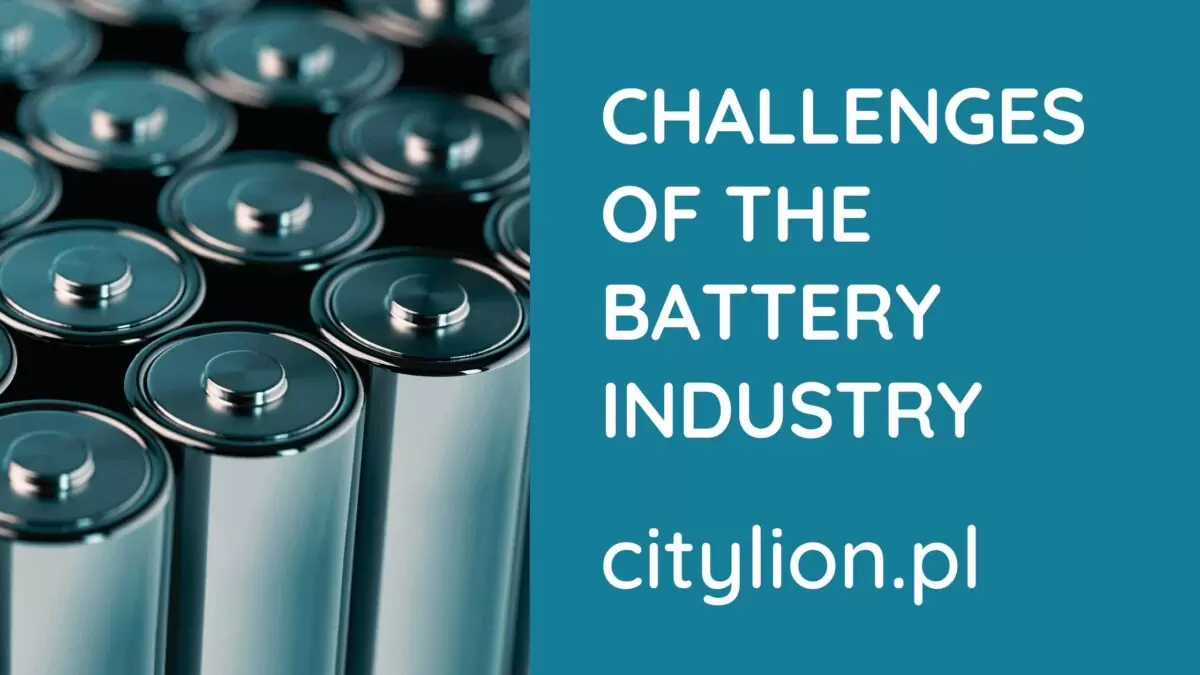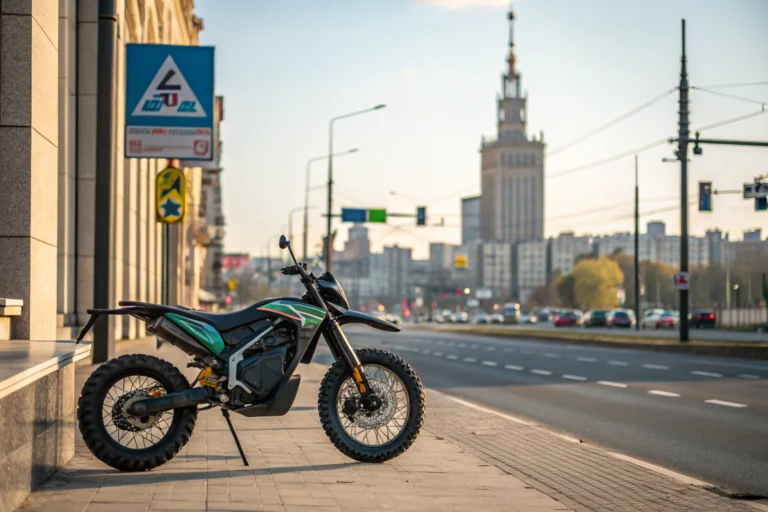We reveal what battery manufacturers are working on!
The rapidly growing battery industry is facing challenges that are crucial for the expansion of electromobility. This is evident in the sector of batteries for electric scooters and bicycles as well. We are examining the challenges that battery manufacturers for e-vehicles are currently facing.
The rapidly growing battery industry is facing challenges that are crucial for the expansion of electromobility. This is evident in the sector of batteries for electric scooters and bicycles as well. We are examining the challenges that battery manufacturers for e-vehicles are currently facing.

5 September 2023

Poland is the second-largest battery producer in the world. Batteries already account for over 2.4% of our export value. This is not surprising, as the production value of this sector in our country has increased from 1 billion PLN in 2017 to over 38 billion PLN in just 6 years. This primarily concerns batteries for electric cars, but for now, they are using the same technologies as batteries for scooters and bicycles. Therefore, in practice, all battery manufacturers are facing the same challenges today.
Increasing Battery Energy Density and Reducing Weight
Key to the battery industry’s development is increasing the energy density of cells. This parameter can be explained as the ability to store energy per unit mass. The higher it is, the more capacity a battery will have at constant weight. Conversely, batteries with high energy density can have less weight for the same performance.
Energy density is crucial in electric cars because their cell packs weigh hundreds of kilograms (e.g., 480 kg in the Tesla Model 3), and in e-trucks, they can be so large that they limit payload and tonnage. This is also an important parameter in the construction of electric bicycles and scooters.
Batteries for electric scooters and bicycles can weigh up to 10 kg, which can represent up to 40% of the total weight of these vehicles. Lighter batteries make it easier to transport small devices, including laptops.
The energy density of batteries has increased since the beginning of their production. The first Li-ion / Li-Poly cells that appeared on the market 20 years ago had an energy density of about 120 Wh/kg. Modern models offer 250-300 Wh/kg, and new batteries from the Chinese manufacturer CATL offer up to 540 Wh/kg. It is estimated that aluminum-sulfur batteries will achieve an energy density of up to 1400 Wh/kg. However, this technology is still in the testing phase.
Extending Battery Life
Extending the lifespan of batteries will indirectly reduce the costs of their disposal, which are at least partially included in the battery’s price. Therefore, the longer we use the cells, the cheaper they will ultimately be. This is why extending battery life is one of the challenges for their manufacturers. It depends on battery production technology and the user’s method of use (especially charging). Of course, manufacturers do not have direct control over the latter group of factors, so they focus on the former.
It is estimated that the standard lithium-ion battery for electric scooters or bicycles has a lifespan of 500 to 1000 charge cycles. In practice, this means about 2-3 years of use with daily device usage, but over time, the efficiency and capacity of the cells noticeably decline.
The more often we want to use battery-powered devices, the more importance we will attach to the lifespan of their batteries. Lithium iron phosphate (LiFePo4) batteries are gaining popularity in this regard, as they have a lifespan of 3000-5000 cycles. The most promising in this regard are still prototype sodium batteries, which are expected to have a lifespan exceeding 10,000 cycles.
Reducing Production Costs through the Use of New Technologies
The price of batteries also affects their attractiveness and competitiveness in the market, mainly due to the competition resulting from the cost of materials used in production. It is worth noting that since 2020, the price of lithium has increased nearly tenfold, reaching a record $80,000 per ton in 2022. This affects the price of the cells themselves and the energy stored in them.
For example, the cost of 1 kWh in modern lithium-ion batteries is around $150. The use of modern technologies can reduce it to as low as $15 per kWh (e.g., lithium-air batteries). Most of the currently researched innovative solutions relate to applications in electric cars and energy storage systems. However, it can be assumed that they will eventually be at least partially adopted in batteries for smaller devices.
Developing Charging Infrastructure and Reducing Charging Time
It is no secret that the development of electromobility, especially in Poland, is still hampered by inadequate charging infrastructure. There are still too few charging stations, especially near highways and city centers.
Nevertheless, this industry is developing very dynamically. According to the “Electric Mobility Map” report, there are already 2885 charging stations in Poland, and dozens more are added every month.
One of the new players is the company Aster Streams, which plans to build 1000 charging stations in Poland by the end of 2026. We support their initiative!
Increasing Battery Safety
It is a fact that the development of electric vehicles and other battery-powered devices has led to an increase in battery-related incidents. In 2020 alone, there were over 10,000 cases of battery failures in electric scooters that resulted in fires. In April of this year, a fire caused by a damaged e-bike battery in the United States claimed the lives of two children. The more battery-powered devices we use, the more such incidents will statistically occur. Therefore, a significant challenge for the battery industry is to increase safety by reducing the risk of battery failures.
It is obvious that battery manufacturers cannot eliminate cases of cell damage caused by users or their mistakes in storing and charging batteries. However, they can adopt safer technologies than lithium-ion, such as solid-state batteries that do not contain organic solvents in the electrolyte or LFP batteries that use stable chemistry.
Until innovative solutions become commonplace, efforts must be made to improve the quality control of modern batteries to eliminate defective components or assembly errors. Education of users of all battery-powered vehicles regarding their safe use, storage, and charging is also essential.
The Necessity of Continuous Research and Dynamic Market Development
In the context of the discussed challenges, there is one more that essentially encompasses all the others. It concerns the need for continuous development of battery technologies by seeking new design solutions, but especially innovative materials.
This is evident, for example, in the development of Li-ion technology, in which the use of new materials such as lithium and iron oxide cathodes has allowed for a 100% increase in energy density compared to the first batteries from the 1990s.
Equally important is the possibility of avoiding the use of problematic materials such as lithium, cobalt, copper, or nickel. In this regard, sodium-ion batteries are worth mentioning, as they have the potential to revolutionize the e-vehicle market by reducing production costs through the use of cheaper and more readily available sodium.
EU Battery Regulation and Its Consequences
On July 10, 2023, the EU adopted regulations on batteries and used batteries, immediately referred to as the “Battery Regulation.”
The Battery Regulation presents many challenges for battery manufacturers. Importantly, the new regulations apply to batteries for all devices, not just vehicles but also phones, laptops, and energy storage systems. Additionally, it introduces a new category into the nomenclature: “LMT batteries,” which are batteries for light transport devices such as electric scooters, scooters, and bicycles.
Among the main requirements of the Battery Regulation is designing devices in a way that facilitates battery replacement. This is to enable users to easily remove the battery, making it easier to recycle. Furthermore, the Battery Regulation also sets limits for the collection of used portable batteries (up to 45% in 2023, 63% in 2027, and 73% in 2030) and LMT batteries (up to 51% in 2028 and 61% in 2031).
The Battery Regulation aims to provide greater control over battery usage, but more importantly, it aims to increase the scale of battery recycling and the recovery of valuable materials, the extraction of which has an impact on the natural environment.
In the long term, the battery industry will benefit from the increased scale of cell collection and recycling. The most significant difficulty seems to be the requirement to facilitate battery replacement, as it could make it easier for competitors to attract some customers.
Summary
It is easy to see that the challenges faced by battery manufacturers today could become factors hindering the expansion of e-vehicles and the popularity of other electric devices in the future. Time will tell how the industry’s leaders and innovative start-ups will tackle these problems. Two things are certain, though: the value of the battery production sector is increasing year by year, and there is no end in sight to this trend.

I have been co-creating City Lion since December 2019 and have been involved with electric vehicles since 2013. My mission is to support the development of electromobility, which will help free the world from emissions, pollution, and noise. Feel free to contact me via LinkedIn.


